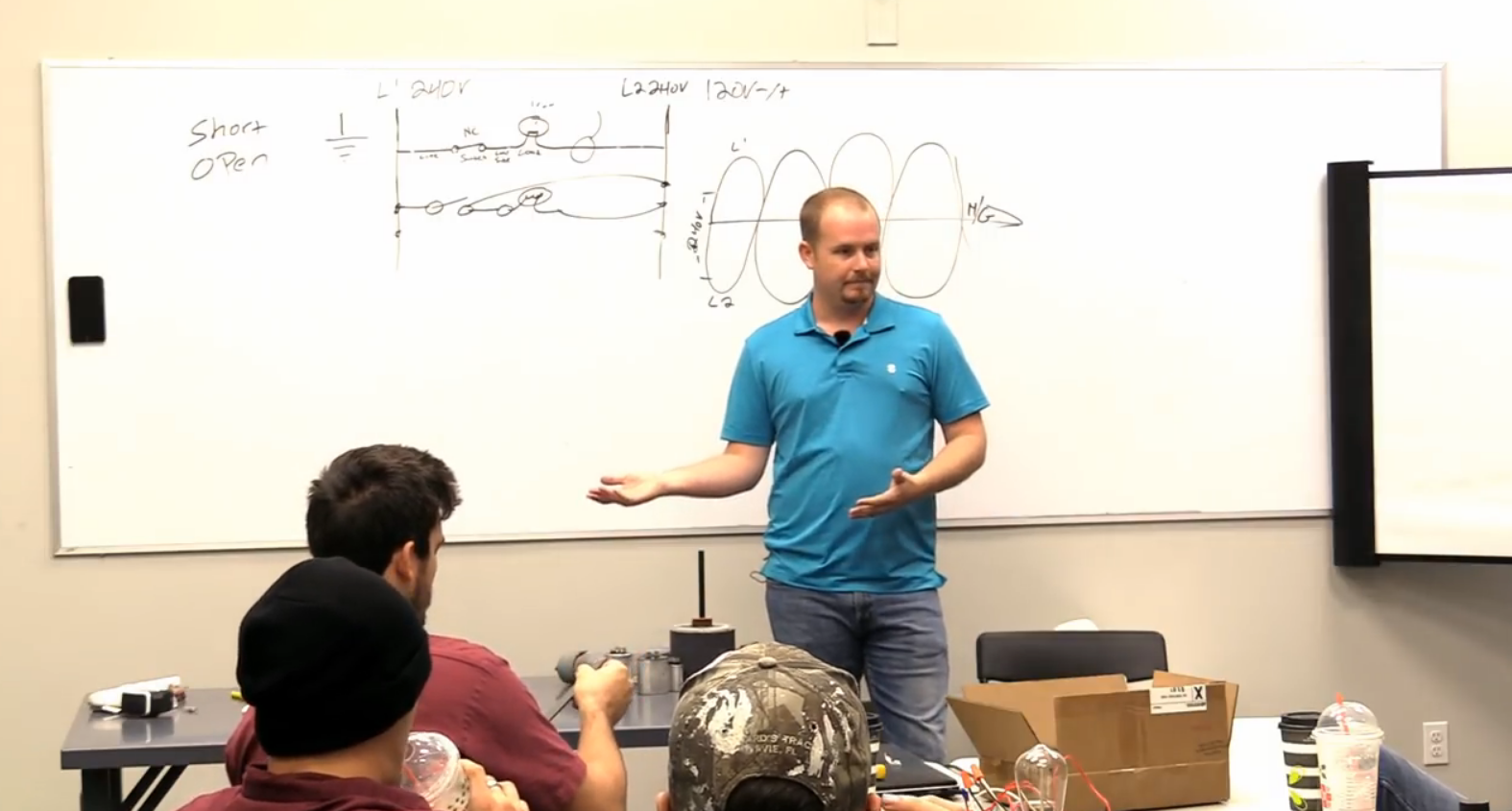Open and Short Circuits Class
May 4, 2018


A short happens when a circuit takes an undesigned path (something is happening that should not be happening), and an open circuit means that there is no electricity when there should be electricity. A shorted compressor is very different from an open compressor; thermal overload from a short doesn’t result in a breaker trip (which causes an open circuit).
The R terminal is the line side of the thermostat. Some of the load sides include Y, G, W, and O. If two load sides touch, then you get a short but typically won’t see a blown fuse because there isn’t an overcurrent.
If a breaker trips, that causes an open circuit. (However, an electrical event that causes a breaker to trip is typically a short.) Note: Before resetting a breaker, make sure you do a complete visual inspection.
Usually, breakers fail for a reason; that happens a lot when people use breakers as disconnects. Over time, the breakers stop making contact. Some technicians check voltage at each side of the breaker using ground as a reference, and they assume that everything is fine when they read 120v. However, you need to be able to read 240v into AND out of the breaker to verify that you have power. If you have 240v going in but not coming out, then you don’t have a good breaker.
Comments
To leave a comment, you need to log in.
Log In